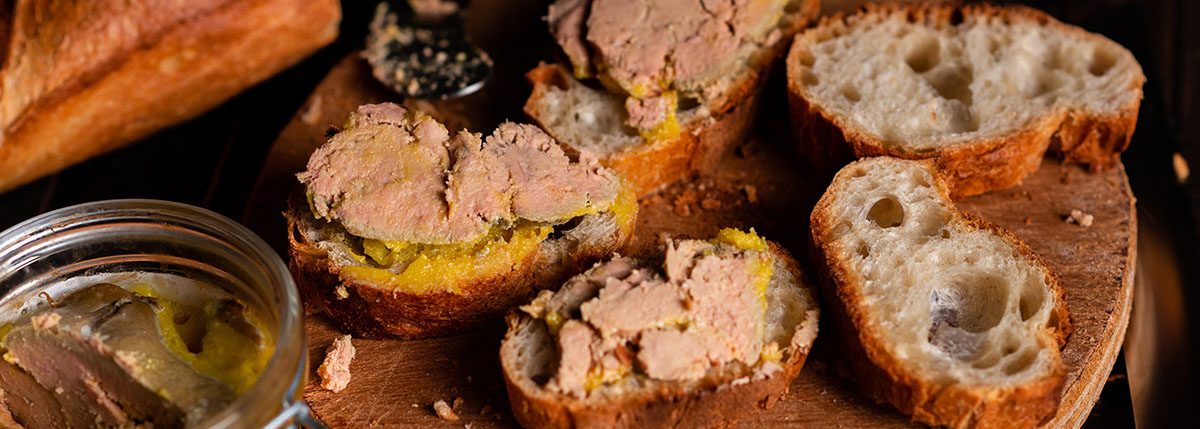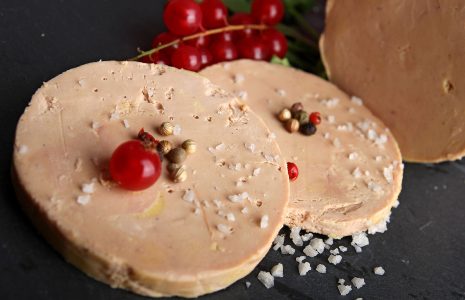
The Long History of Foie Gras
You may all know this classic French dish, but do you know the history behind it?
From originating in Eygpt to crossing the Mediterranean and on to Greece, then France – Foie Gras has been on quite the adventure over the years. With that adventure, there have been a few changes to the process of making it as well as how it is cooked and served.
We’re going to look at those changes as we dive into the history of Foie Gras. So take a journey with us as we travel back in time to retrace the steps of this French classic.
If you’d like to explore our range of foie gras to find out what it’s all about, take a look at our range here.
Where It Came From
It’s Ancient Origins
Foie Gras dates back to the ancient Egyptians, where geese would eat large amounts of food during the winter months, which led to their livers expanding. The ancient Egyptian farmers were also known to force-feed the geese and would often take the fatty livers with them when making long trips down the River Nile.
Foie Gras was then passed on to the Romans, who would force-feed the geese with figs in order to have a sweeter and richer Foie Gras.
Foie Gras seemed to then disappear during the middle ages but returned when French chef, Jean-Pierre Clause, turned the recipe into a dish for the royals. The previously almost ‘extinct’ dish then became renowned in France and was loved by many across the country, including, royals and artists such as Alexander Dumas.
Where It Comes From In France
Foie Gras originated from South-West France, with 90% of the producers today living in the Dordogne Valley.
The History Of Foie Gras And How It’s Produced.
How It Was Produced In Ancient Times
The process of Gavage (force-feeding animals) has obviously changed quite a bit over the years with the advent of modern farming, and some less reputable practices.
In terms of how they used to feed the animals in ancient times, not a lot is known, but you can see early depictions on Egyptian papyruses of them hand-feeding birds. It’s thought that they fed the birds with grain or moistened flour pellets – which is very similar to what they feed them today.
When the practice travelled to Ancient Greece, things changed a bit with them using dried figs to fatten up the birds. Then as it travelled to Rome, they added in honeyed wine to the mix.
How Foie Gras Is Prepared Today
Foie Gras has got a lot of bad rep over the years due to the cruelty inflicted on them by some producers. However, in today’s world, there are methods of producing Foie Gras which do not put any stress on the geese.
There are plenty of farms where the geese live a happy outdoor life, and farmers simply increase their feeds before slaughter or allow them to gradually increase their fat reserves as they would naturally.
Once the best quality livers have been selected, a process called deveining takes place. This is a process which requires a lot of skill due to the intricacies of removing the veins without actually cutting the liver itself. This can make or break the taste of the Foie Gras!
The Foie Gras is then seasoned and cooked, which can vary depending on the personal preference of the chef.
How It Is Served In France
When ordering Foie Gras in a restaurant in France, it will usually come as a starter with a small piece of toast and a confit made of figs or onions.
Sometimes Foie Gras can be found in salads with smoked duck breast for a lighter, more delicate dish.
Additionally, when served as a main course, the Foie Gras will be heated up and accompanied by another selection of meat, such as beef.
If you really want to eat the dish like a local then the best way to serve it is with a small piece of toast, cutting a portion of it and delicately spreading it over the bread.
Bon Appetit!
So there you have it, the long history of foie gras.
From a simple discovery by the Egyptians to finding its way to Europe, where it was served to royalty, to now a widely recognised French delicacy. It’s safe to say Foie Gras has been on a bit of an adventure. There is also no better way to serve it than how the French do it, so grab yourself some bread and confit or throw it in a salad or heat it up with a meat of your choice and take in all its rich flavours.
If you’d like to learn more about how to know what Foie Gras to choose for yourself, take a look at our post here on, Foie Gras Goose Or Duck? A Guide To Choosing Foie Gras. or see more ways to serve Foie Gras with this post, Serve Like The French – 5 Great Ways To Serve Foie Gras.




